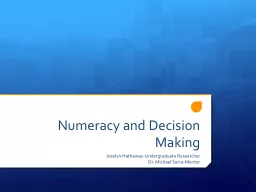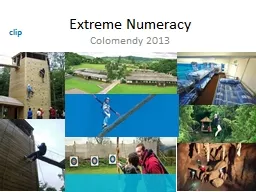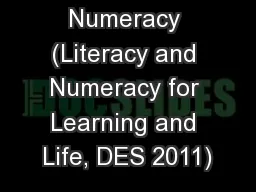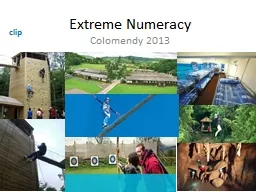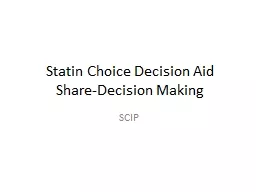PPT-Numeracy and Decision Making
Author : pasty-toler | Published Date : 2017-12-26
Joselyn HathawayUndergraduate Researcher Dr Michael SerraMentor Background Numeracy The ability to understand and work with numbers Low vs High Numeracy An individuals
Presentation Embed Code
Download Presentation
Download Presentation The PPT/PDF document "Numeracy and Decision Making" is the property of its rightful owner. Permission is granted to download and print the materials on this website for personal, non-commercial use only, and to display it on your personal computer provided you do not modify the materials and that you retain all copyright notices contained in the materials. By downloading content from our website, you accept the terms of this agreement.
Numeracy and Decision Making: Transcript
Download Rules Of Document
"Numeracy and Decision Making"The content belongs to its owner. You may download and print it for personal use, without modification, and keep all copyright notices. By downloading, you agree to these terms.
Related Documents

